Cool vs. Warm Olive Skin Tone: How to Tell the Difference

Key Takeaways
**Olive skin** has both warm and cool undertones. It can read neutral at times but tends to skew one way for a given individual. Check for a slight green or gray cast to verify an olive undertone.
💫 Discover Your Complete Color Palette
Ready to discover all the colors that make you look radiant? Our comprehensive color analysis will reveal your complete personal palette - perfect for hair, makeup, and wardrobe decisions.
Take Color Analysis Quiz →Olive is a warm color with subtle yellow undertones and gray. It tends to be earthy, though, which makes it feel cozy and grounded.
In daylight, it reads warm alongside blues and cool grays. Even under cool LED light, the deeper olives can appear neutral or even somewhat cool.
Designers pair olive with cream, terracotta or brass to warm a room, and with navy or charcoal, for balance.
Up next, a mini tutorial on undertones, light, and pairing.
Is olive skin warm or cool?
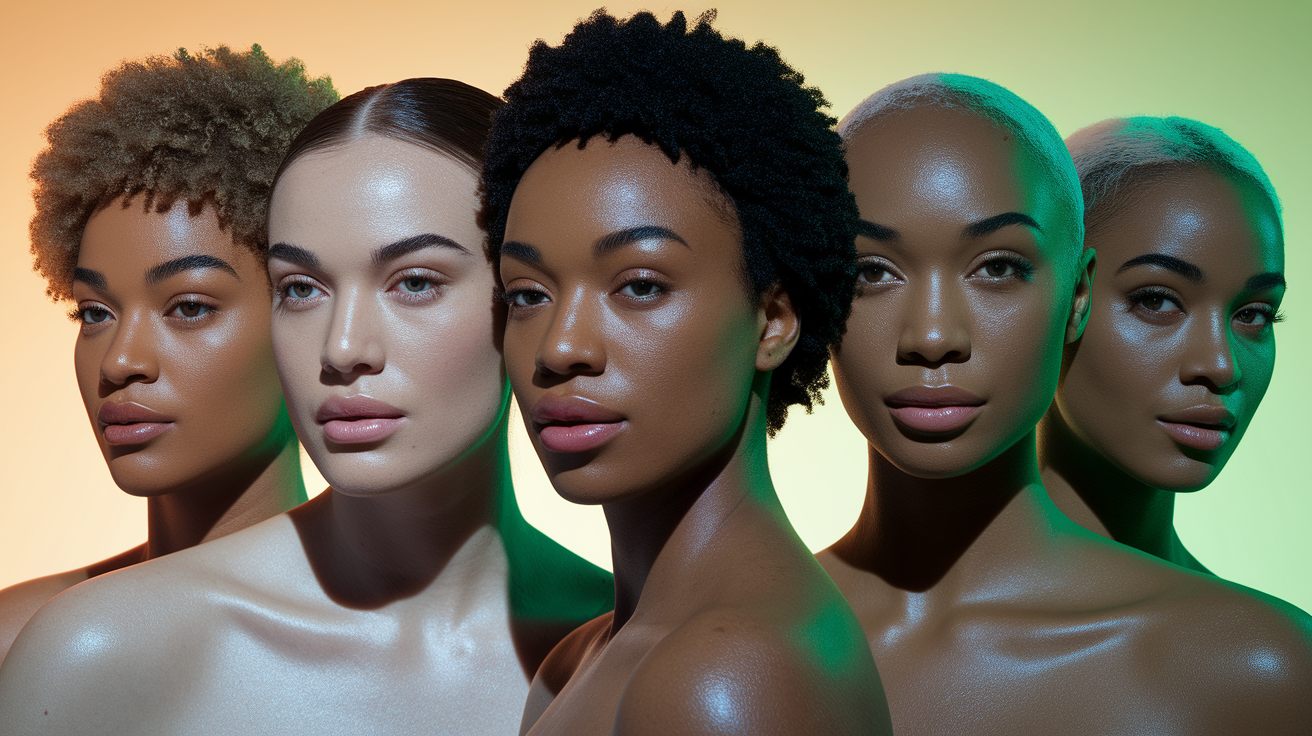
Olive skin takes on a green or gray cast, differentiating it from other tones. It usually reads neutral at first, but the undertone can skew warm or cool. Olive skin is a classic example of this — many olive skinned individuals exhibit both qualities simultaneously, which is why rigid classifications fail.
1. The warm side
Warm olive skin reflects golden, yellow or light brown undertones under the bronze‑green overlay. Your face can look sun‑kissed without sun, and your wrist veins can be a mixture—blue and green, sometimes a teal shift that suggests olive's green undertone while warmth still dominates.
Earth shades work well: camel, rust, terracotta, mustard, warm reds, and burnished orange. In makeup, a peach or coral blush, caramel bronzer and golden highlighter bring a glow without sallowing the complexion. Gold jewelry tends to flatter, reflecting the skin's radiance.
Warm or golden foundations tend to blend clean, without the gray cast some of the neutral shades can leave. Warm olives also tan quickly and seldom burn, a marker of more melanin and warmth in action.
2. The cool side
Cool olive skin has a subtle blue, gray or cool green undertone beneath the surface. The total appearance can remain bronze‑green, but the cast is tranquil and somewhat subdued. On the wrist, veins might swing blue‑green instead of true green.
Jewel tones shine here: emerald, sapphire, teal, magenta, and cool navy. Silver jewelry often looks crisp and cool-leaning makeup–rose or berry blush, taupe shadows, soft mauve lips–keeps balance without pulling yellow.
Cool or neutral‑cool foundations mitigate olive's green tint and keep the match clear, not muddy.
3. The neutral myth
Neutral" in olive hardly ever means no undertone at all. Most olive skin leans one way, even if faintly. Things that appear neutral at noon by a window may suddenly skew warm under tungsten bulbs or cool next to a teal shirt. That back and forth feeds the myth.
Consider neutral to be a mix of warm and cool that leans toward the middle. It's adaptable, not all-encompassing. A so-called neutral olive will not adore every shade, and near-neutrals like soft tomato red or blue-based emerald still count.
4. Why it's unique
Olive's greenish undertone is rare globally, but shows up in a variety of populations, such as Mediterranean, some Asian and Latin groups.
That undertone can conceal redness and mild hyperpigmentation better than pink‑based skin. It teams effectively with a broad palette—warm spice tones and cool jewels alike hit if saturation aligns.
Most olives do very well with gold jewelry, although there are some 'cool' olives who like silver better. The vein test helps: blue‑green or teal veins often signal olive.
It's true that color analysts tend to classify olive in warm palettes, but a lot of us carry a mix of warm and cool, so always try shades out on skin, not paper.
How to find your undertone
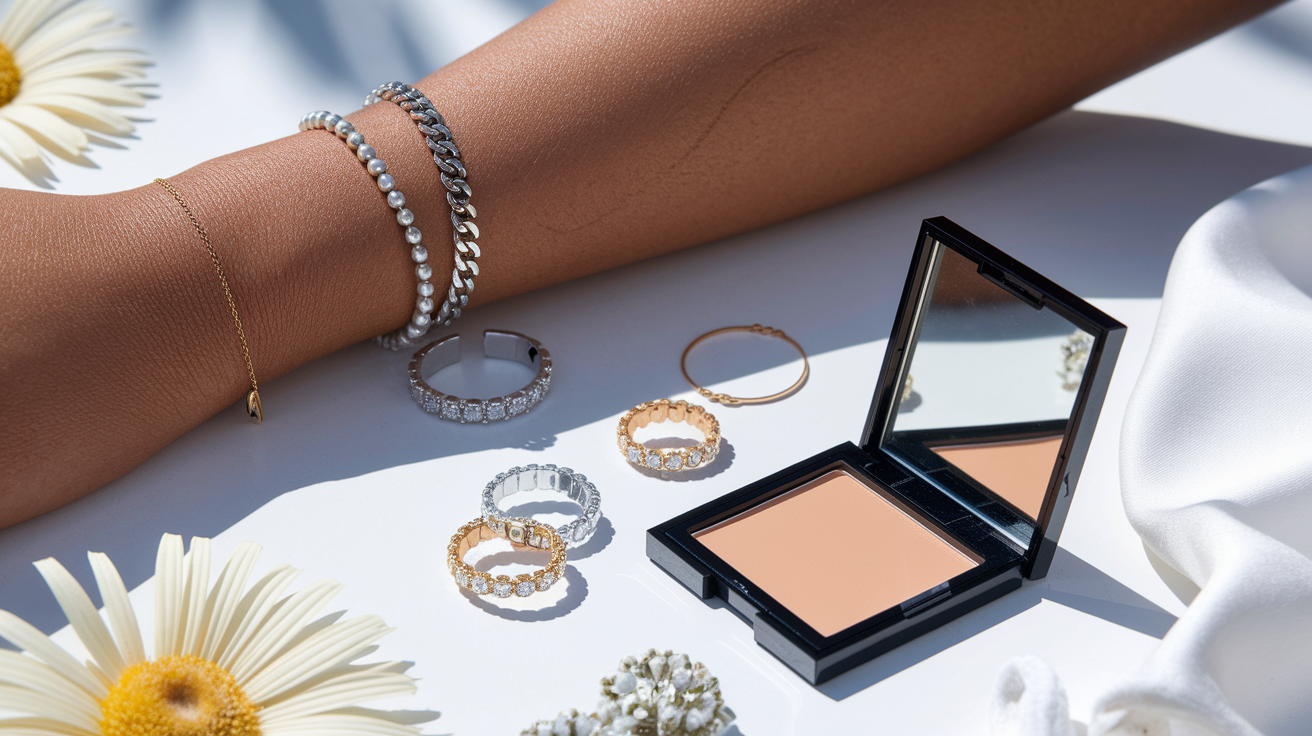
Undertone lies below skin color and remains constant throughout the year. While most people are warm, cool, or neutral, olive skin frequently lies on top of warm or neutral with a muted green overlay. That green note can make olive read 'sickly' in very warm colors or make foundation match harder.
A couple of at-home tests, combined, eliminate the guesswork and let you determine if olive green skews warm or cool on you.
The vein test
Check veins on inner wrist in daylight. BLUE OR PURPLE INDICATORS = BLUE COOL UNDERTONES. Green or yellow means warm undertones with a little yellow. Most olive skins reveal teal, or both blue and green simultaneously, typically resulting in olive-neutral or olive-warm.
If you can't 'see' the color, compare both wrists, then compare to a friend's. Olive can appear a hair greenish against other skin. Take an unfiltered photo and pay attention to what you notice.
Jot down what you notice so you can compare it with other tests.
| Test | What you check | Result | Undertone hint |
|---|---|---|---|
| Veins | Wrist veins in daylight | Blue/purple | Cool |
| Green/yellow | Warm | ||
| Teal/mixed | Olive neutral/warm |
The sun test
Consider the most recent occasion when you baked for 30–60 minutes in the sun. If you tan fast with little burn, you probably are warm or neutral olive leaning. If you burn first, then tan later, that's closer to cool.
Olive skin tends to tan a deep olive-brown with very little redness, camouflaging the one-of-a-kind green undertone until you're looking at the before and after photos.
Make a short sun history: do you freckle, flush, or bronze? Mark season, time of day and SPF use. Observe how quickly color washes out. These catch if a blue-leaning cool undertone or a yellow-leaning warm sits under your olive cast.
The jewelry test
Test basic gold and silver near bare skin in daylight. If gold makes your face glow, you probably have warm or olive-warm. If silver looks crisp and gold sallow, that leans cool.
If both do, that's a neutral olive and a big color spectrum. Apply this when shopping, quick. Record your selections and begin a swatch list for metals, watch cases and eyeglass frames.
The white test
Hold true white up to your face, then ivory or cream. Pure white flatters cool or olive-cool by lifting clarity. Ivory flatters warm or olive-warm by softening yellow.
If true white washes you out but cream brings you alive, that's warm. If cream looks muddy but white pops, that's awesome.
Combine this with foundation swatches on the jawline. If typical warm shades look orange and cool shades look pink, you might be olive with a green undertone. Aim for olive-leaning or neutral-yellow bases, or schedule a **color analysis** to chart hues that won't battle your skin.
Checklist: veins, sun history, jewelry, whites. If three concur, trust the pattern.
The science of olive skin
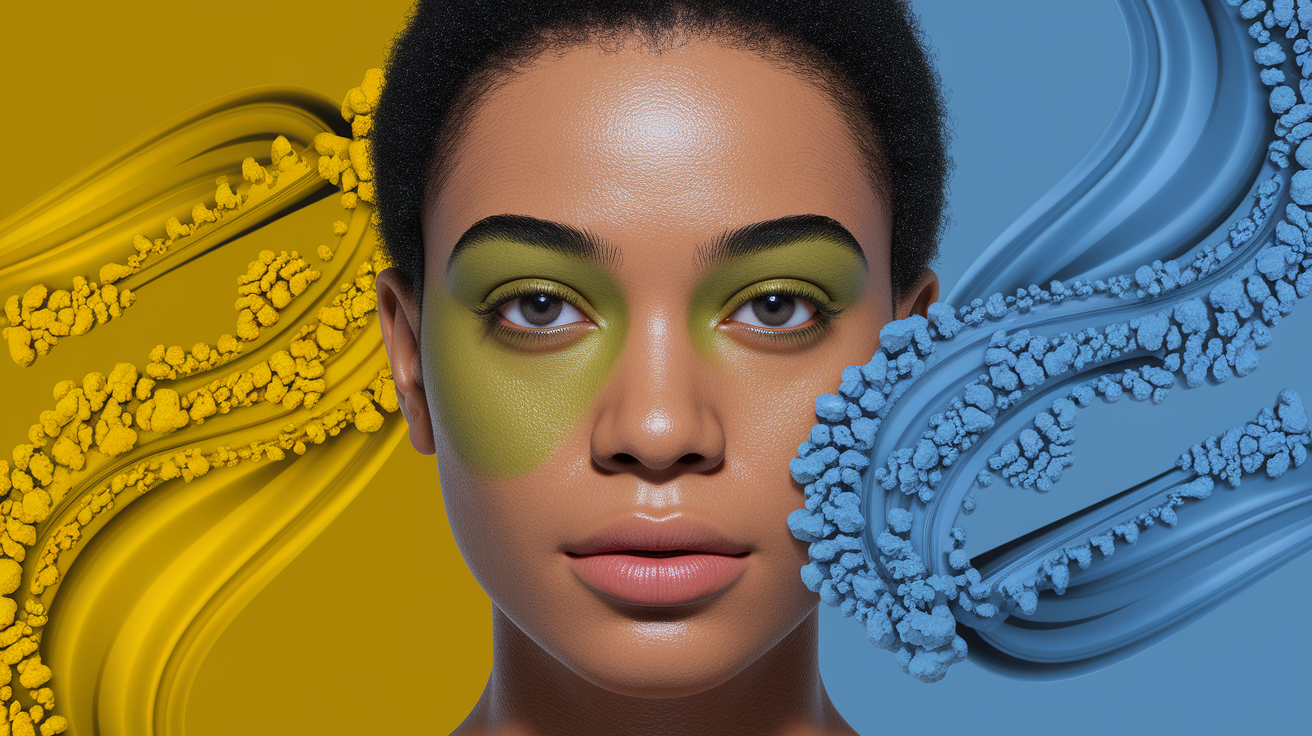
**Olive skin tone** combines eumelanin and pheomelanin, resulting in a unique greenish hue rather than merely golden, pink, or ash. This blend is influenced by genetics, ethnic background, and overall melanin content. The balance of yellow and blue pigments creates the signature **olive complexion**, producing that coveted neutral-to-green sun-kissed tint that many desire.
Green pigment
The greenish cast isn't some actual green paint, it's the optical effect of yellow and blue pigments intertwined beneath the epidermis. When light hits skin, that combo can read olive, occasionally with a muted gray halo.
This green note alters the way hues sit on the face and body. Cool studio lights might make it grayer. Warm daylight can pull out muted gold. It mutes redness which is why olive skin can look even and calm yet occasionally dull with the wrong shade.
Apply that science when selecting products. Green-tinted correctors are rarely needed – opt for neutral or olive bases and you won't turn orange or pink. Blush in muted rose, terracotta, or brick reads more true than bright coral. For clothes, deep teal, forest and rich burgundy all tend to blend together, while neon yellow or icy pastels will compete.
Yellow and blue
Olive undertones are that tug-of-war between yellow (warmth) and blue (coolness). More yellow inclines to warm, more blue to cool. There's a lot of variations in **olive skin tones**, most are near neutral, but slight shifts dramatically change what looks good.
Determine your side of dominance with simple tests. Test in daylight, gold vs. Silver jewelry, peach vs. Berry blush, cream vs. White fabric. If gold, peach, and cream light you up, your yellow leads. If silver, berry, and white appear crisp, blue might be bolder. If both work, you're probable neutral-olive.
A simple chart helps:
- Yellow-dominant olive: warm golds, camel, olive-drab, paprika.
- Neutral olive: charcoal, navy, espresso, soft white.
- Blue-dominant olive: teal, emerald, plum, cool taupe.
Melanin's role
Olive skin tone contains more melanin, providing natural UV buffering and a richer baseline tone. Individuals with a neutral olive skin tone often tan quickly and seldom burn; however, UV exposure still causes damage that may not be immediately noticeable. Daily broad-spectrum SPF 30+ is essential for protection.
Melanin defines the depth range from light olive to deep olive and significantly influences signs of aging. Fine lines may appear later, while pigmentation shifts can occur sooner. Hyperpigmentation, which includes dark spots from sun exposure or irritation, can be persistent and challenging to treat.
To achieve a flawless look, match your base makeup to your depth and unique undertones. Testing around the jaw in natural light and selecting olive/neutral labels can help avoid an orange cast.
Colors that enhance your glow
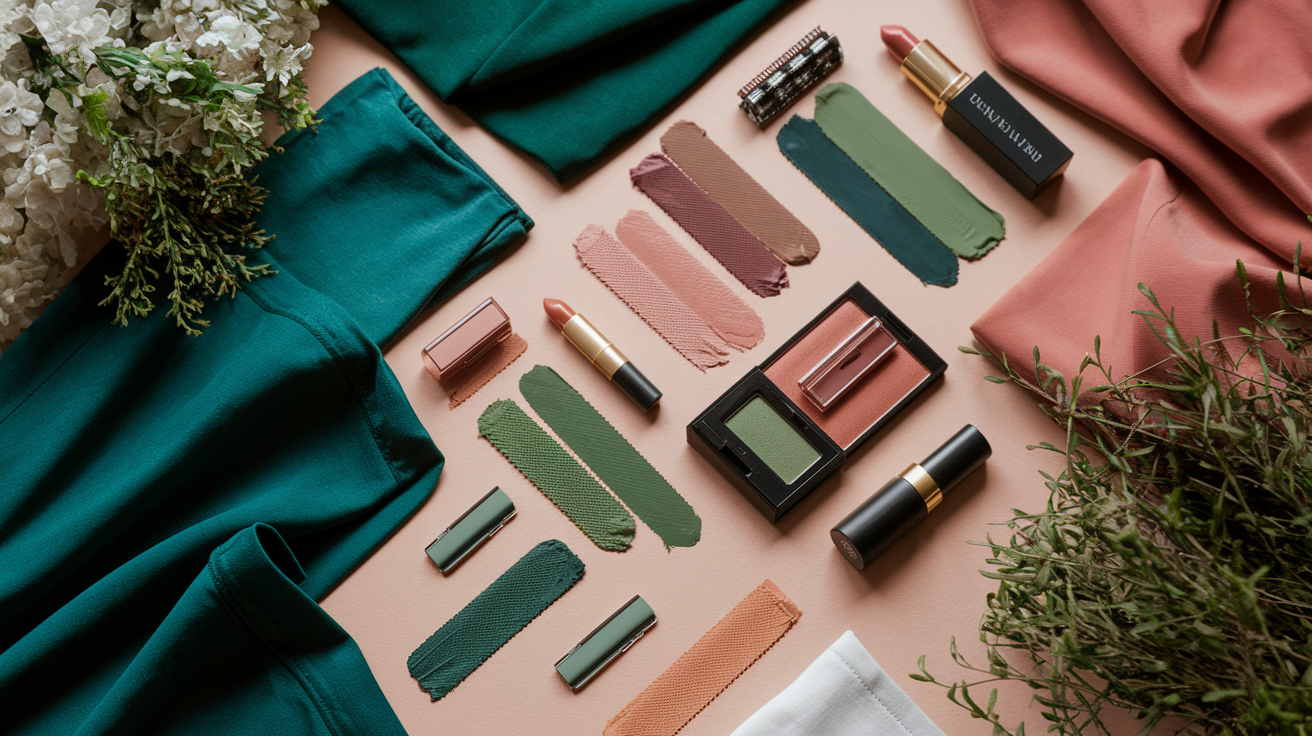
Olive skin tone has yellow-golden undertones with a slight greenish hue. It can range from light olive to medium and become more bronzed in summer, making a versatile color palette that flexes with the seasons ideal.
For clothing
Begin with deep, earthy and jewel tones that harmonize with your undertone. Warm olive undertones shine with terracotta, camel, golden brown, rust and warm olive green.
Cool-leaning olives look sharp in deep forest, teal, sapphire, emerald and burgundy, which combat any ashy cast and sharpen contrast.
Pass on ultra‑pale pastels, dusty taupes and weak beiges. These washed-out hues can bleach out olive skin tones or emphasize drabness in dim light.
Brighten up your glow about colors Magenta, mustard and turquoise pop against olive skin, while cobalt, fuchsia and chartreuse add crisp edges for evening or events.
Build a capsule: base layers in deep olive, espresso, and warm navy; knitwear in terracotta and caramel; statement pieces in emerald and garnet; accents in mustard or teal. This combo stays with you through season shifts and sun swaps.
For makeup
Your base matters the most! Opt for foundation with olive, golden or neutral undertones to prevent a pink or ashy cast. In summer, when skin shines more sun‑kissed, bump one depth deeper to maintain the match crisp.
- Foundation: olive-neutral or golden-neutral ranges; avoid strong pink.
- Blush: terracotta, warm peach, cinnamon, rose brown. Cool olives try mauve-rose.
- Lipstick: caramel nude, warm rose, brick, rust, cherry. Cool olives shine in berry, plum, cranberry.
- Eyeshadow: earthy quads (olive, bronze, cocoa) and jewel mixes (emerald, sapphire, amethyst).
Cool olives feel fresh with mauves, plums and soft rose. They impart vibrance without going sallow.
Try test palettes that combine earthy metals with jewel accents. Bronze lids with emerald liner or cocoa mattes with amethyst shimmer maintain equilibrium and profundity.
Neutral shades with golden or peachy undertones impart a natural, sun‑kissed glow that somehow obliterates any gray mask without caking on the coverage.
For hair
Rich browns, deep mahogany, and dark ash sit well on olive skin by reflecting its depth while outlining the face crisply.
Olive undertones that warm glow with caramel, honey or golden highlights—we paint them in fine ribbons, not blocks, to prevent brassiness.
Cool olives defy cool brunettes, soft black or targeted jewel touches—subtle emerald or blue-black, tone-neutral to ashy.
Stay away from intense orange or banana‑yellow blondes. They combat the green undertone and make skin appear dull, especially inside.
Beyond the seasons: a modern take
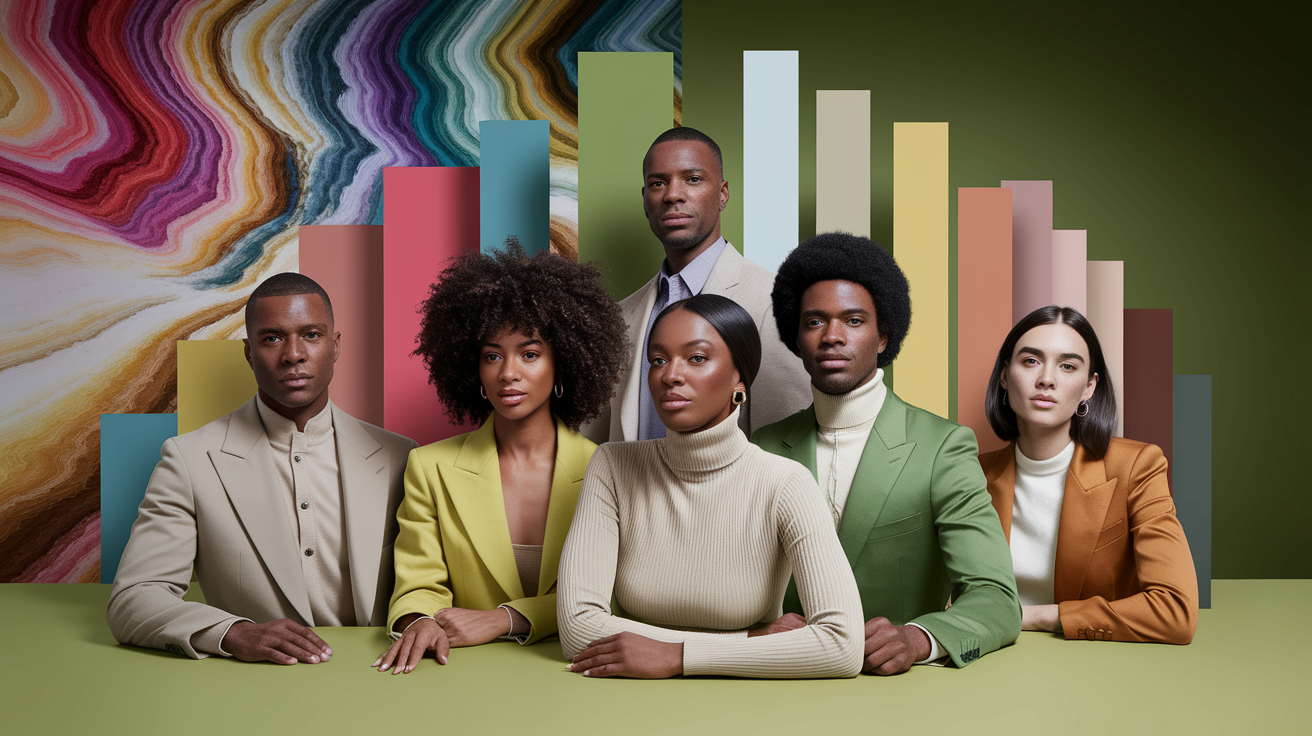
Color seasons work for a lot of people, but olive undertones hardly ever behave. Olive skin can oscillate between subdued and luminous, warm and cool, depending on lighting, undertones and intensity. A modern take means stepping beyond categories to experiment, see, craft a taste that functions in the real world.
This view fits the idea of going "beyond the seasons": not a new rulebook, but a shift toward change, growth, and relevance for today. Although data on this phrase is sparse, folks frequently use "a modern take" as a new lens that brings classics to current times and makes room for nuance.
- Olive undertones may be warm, cool, or neutral—frequently all three throughout zones of the face.
- Green and gray cast can mute colors that sing clear on other skins.
- Lighting shifts olive; daylight may warm, LEDs may cool.
- Better tools: tone-on-tone, chroma level, and contrast mapping.
- Newer systems (12–16-season, tonal analysis, Sci/ART, Munsell-inspired methods) add nuance.
- Aim for fit, not rules: test, record, repeat.
Breaking the rules
Begin with rule bending just once a week. Match a cool electric blue tee with warm gold hoops, or hot magenta lips beside an earthy khaki jacket! Many olives light up in 'wrong' hues when texture and dimension are right!
Flip opposites. Soft olives might pop in icy mint + dark chocolate, while deeper olives can take neon lime with charcoal. If a color sounds loud, interrupt it with skin-like beige shoes or a muted scarf.
Have faith in your eye. If your face looks clear and your features pop, it works. Jot it down. Keep a running list on your phone: cobalt + camel, tomato red + olive drab, lilac liner + bronze cheek.
Your personal palette
Create a living palette that suits your undertone, style and daily necessities. Think in roles: neutrals for ease, statements for spark, accents for play. Try on bare skin in daylight, then under indoor LEDs. Edit your life not fashion's calendar.
| Category | Purpose | Olive-friendly picks | Notes |
|---|---|---|---|
| Neutrals | base pieces | olive drab, deep taupe, soft black, stone | pick low-chroma, skin-adjacent shades |
| Statements | focal color | cobalt, tomato red, hot magenta, saffron | anchor with muted neutral |
| Accents | small hits | chartreuse, icy mint, violet, copper | use near eyes/lips for lift |
| Metals | finish | antique gold, soft silver, bronzed brass | match to jewelry and undertone |
Consult this table when shopping, planning makeup or picking hair color.
Context is key
Light transforms dramatically. The midday sun can warm an olive complexion, while cool office LEDs can turn it gray. Experiment with colors next to a window, then under indoor light for a complete color analysis.
So match the moment. Hard for work soft black and stone one bright lip. For nights out, raise contrast: cobalt dress, antique gold earrings.
Hair, eyes and closet count. If you have dark hair and brown eyes, we love bold brights. Lighter hair might want to opt for softened versions. Photograph clothes and makeup in varying light, then clarity and balance.
Don't just go beyond the seasons — build on what repeats, embracing your unique undertones.
Common olive skin misconceptions
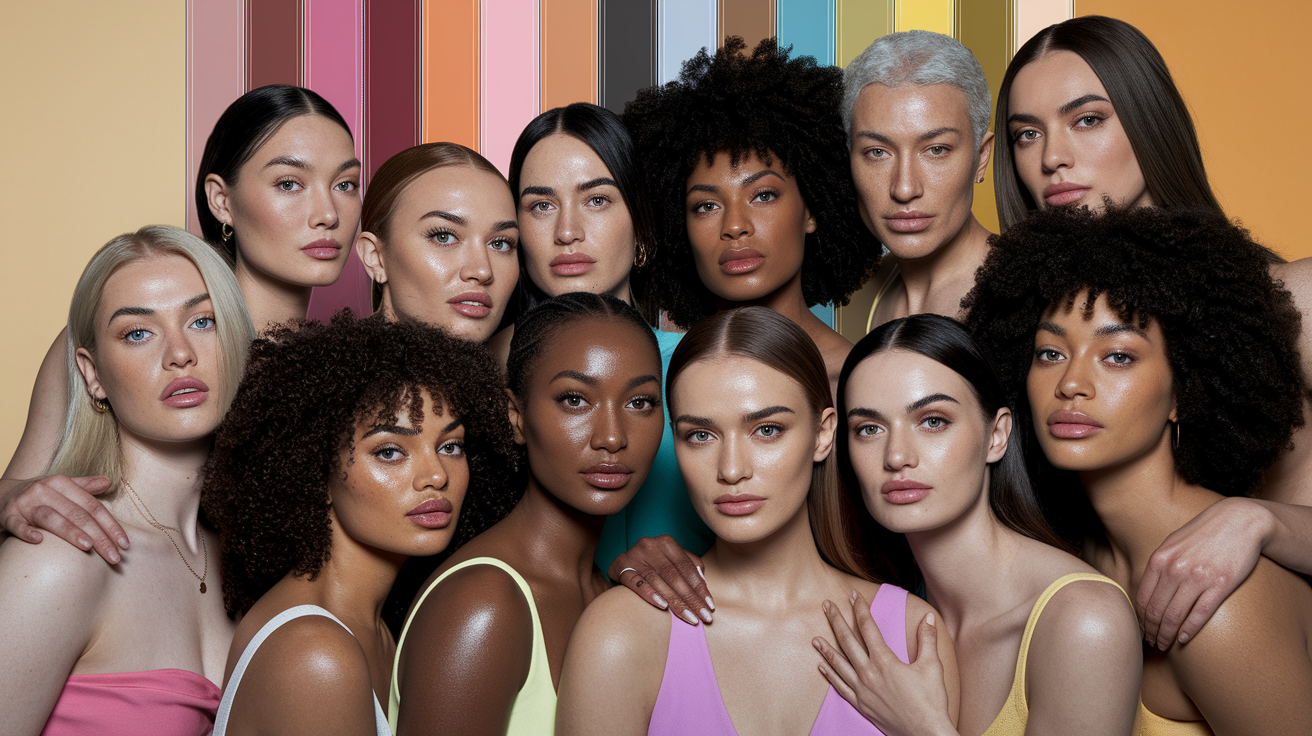
Olive skin tone often gets dragged into the warm-vs-cool debate when we inquire if olive green is warm or cool. The reality is messier, as olive refers to a unique undertone rather than a specific depth or shade. This neutral olive skin tone can appear warm, cool, or mixed depending on lighting and the color palette used.
Dispel the myth that olive skin is always tan or dark; it ranges from fair to deep.
A lot of people think 'olive' means a sun-kissed, caramel appearance. Although those tones are prevalent in Latin America and the Mediterranean, olive can be very pale or medium or very deep. I've encountered fair olive canvas in Ireland who fry prior to bronzing and deep olive performers whose skin transitions from green-gold to green-brown depending on the light.
What counts is the subtle green tint, muted yellow, or ash-leaning gold beneath the surface, not the surface depth. If a light olive wears a too-pink base, the skin looks flushed and off, and if a deep olive wears a too-red brown, it turns muddy.
Clarify that olive undertones are not exclusive to any one ethnicity or region.
Olive shows up in many groups: the Middle East, east Asia, India, Eastern Europe, even parts of Ireland. Linking it to a single location dismisses individuals and distorts color spectrums. The phrase 'olive skin' can seem exclusive as it delimits a limited Mediterranean-centric archetype.
A better frame: look for that slight green tint, muted yellow, or ash-leaning gold beneath the surface, no matter where someone is from.
Address the misconception that olive skin is always neutral or hard to match in cosmetics.
Olive is not a stationary "neutral." A few olives swing cool (green plus blue-pink), others warm (green plus golden). Some rest near true neutral. Darker surface tones aren't necessarily warm; that rule breaks all the time.
Matching is about undertone harmony. Use daylight, test along the jaw, and swatch two or three shades: one more golden, one more neutral, one slightly olive. Because the wrong base goes ashy gray fast, particularly on cool-leaning olives. Brands with genuine olive or muted-gold selections assist; however, tweak with mixers if crucial!
Correct the belief that olive skin cannot wear certain colors—proper undertone matching is key.
Color rules such as 'olives can't wear pastels or brights' are way off. Match the undertone, not the myth. Cool-leaning olives radiate in blue-based reds, pine green, and cool lilac. Warm-leaning olives shine in earthy rusts, mustards, and olive green itself.
For mixed olives, balance helps: soft white beats stark white; teal beats neon cyan. Remember that things such as the Fitzpatrick Scale (1975) measure burn/tan response, not undertone, so they won't determine your best palette.
Conclusion
In summary, olive reads as neutral to warm. The blend varies with light, depth and undertone. Skin with green-gold notes leans to warm. Skin with gray-green undertones reads more neutral. Both can appear cool in harsh light. That swing is typical.
To construct a sound match, test shades on the jaw in natural daylight. Choose tones which ring the green-gold foundation. Think soft cocoa, camel, moss, and rich berry. For metals, opt for gold or mixed metals. For makeup, go for peach, terracotta or a muted rose. These colors enhance the radiance, not cover it up.
To experiment for next steps, swatch 2 or 3 next to each other. So snap a fast pic in shade and sun. Retain the one that blends with no lines! Scored a W? Share it & tag us!
Frequently Asked Questions
Is olive green a warm or cool color?
Is olive green warm or cool? It carries yellow or brown undertones that provide warmth, making it a great choice for those with a neutral olive skin tone. However, some shades of olive can appear muted or cooler, leaning toward a gray undertone.
Is olive skin warm or cool?
Olive skin typically has a neutral-to-cool base with green or gray overtones. It can look ashy in the wrong light. Most olive skinned people aren't strictly warm or cool. They rest in an equilibrium of muted space.
How can I tell if olive colors suit my skin?
Test by natural light. Hold up different olive swatches: yellow-olive, gray-olive, and deep olive. If the shades enhance your complexion and make your face look brighter and more even, you're in the right olive color palette.
What colors best complement olive skin?
Rich jewel tones (think: teal, sapphire, aubergine), earthy neutrals (taupe, camel) and warm metallics (gold, bronze) flatter many olive complexions. Cream trumps bright white. Stay away from super brights neons that accentuate sallowness.
Does olive skin work with both warm and cool palettes?
Usually, olive skin tones are adaptable but subdued, with neutral olive skin benefiting from balanced, softened versions of warm and cool shades like muted greens, dusty rose, and slate blue.
Why do some olive tones look gray or dull on me?
If the olive color is too muted or too cool for your neutral olive skin tone, it will drain your face. Lighting counts as well, so pick out the olives with a bit of warmth or richness, and double-check in natural light.
Are seasonal color systems accurate for olive skin?
Not necessarily. Most seasonal systems overlook the unique undertones of olive skin tone. A contemporary perspective considers depth, chroma, and undertone simultaneously, making personal experimentation with fabric or digital draping more trustworthy.